Last week Crucial updated their firmware for the m4 family of SSDs. The new m4 firmware, version 0009, is a direct update for retail drives that shipped either with firmware version 0001 or 0002. While firmware 0009 patches bugs and improves on compatibility with host systems, the highlight is Crucial’s claim that sequential read speeds have been improved by up to 20%. That’s a huge step up so we put our original version firmware up against the new m4 firmware in this review to see just how much difference firmware can make in the performance of an SSD.
To limit redundancy, much of our original Crucial m4 review still applies; the design, specs (outside of performance) and components are unchanged. This review contains a head to head firmware showdown comparing the original to the newly revised version 0009. We focus only on performance benchmarks, comparing the firmware against each other on the charts to make it clear where the m4 picked up pace, and in a few cases, where it gave some back.
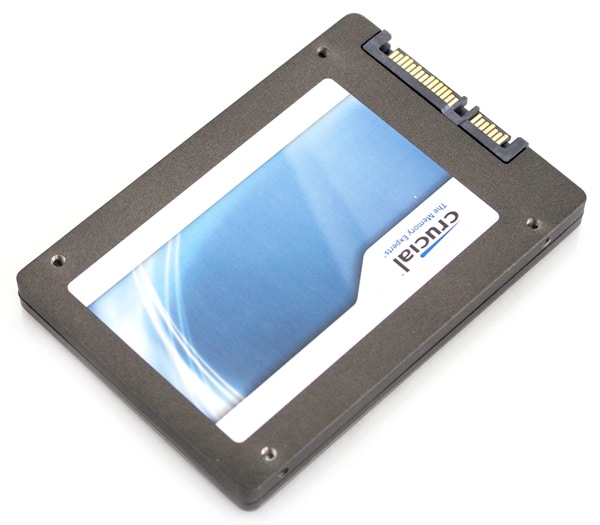
Synthetic Benchmarks
To put Crucial’s claims of a 20% sequential read speed increase to the test, we used IOMeter to compare the original 0001 firmware to the latest 0009 firmware on our 256GB m4.
Sequential read speeds improved by 86.5MB/s which worked out to a 21% improvement. Write speeds, at least in this portion of our test didn’t change.
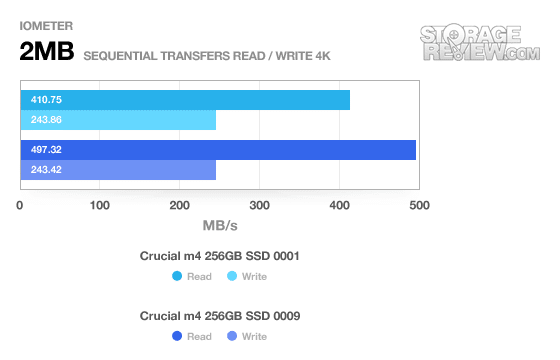
In our 2MB random transfer test read speeds improved again, this time increasing 64.4MB/s or 16.2%. Write speeds ended up dropping just over 2MB/s, which is insignificant.
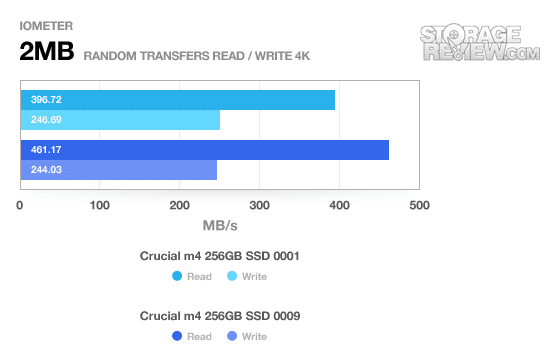
On the small scale in our random 4K read and write test, the new 0009 firmware improved both read and write speeds. 4K read speeds improved by 0.79MB/s, gaining 200 IOps, while write speeds improved 3.76MB/s and gained 963 IOps.
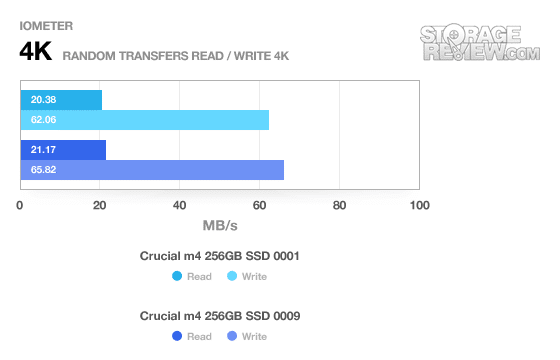
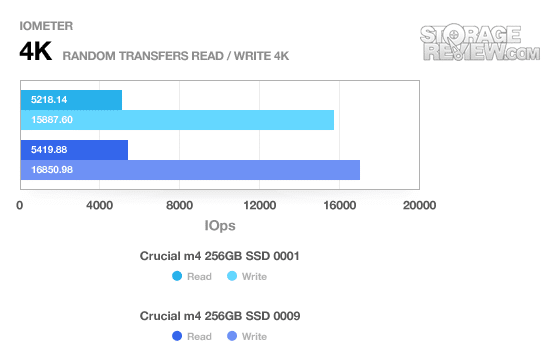
Besides the claimed 20% increase in read speeds, Crucial also mentioned write latency would improve. In our tests we did see an improvement, with average response times lowering from 0.062ms to 0.059ms. Max response time also dropped substantially.
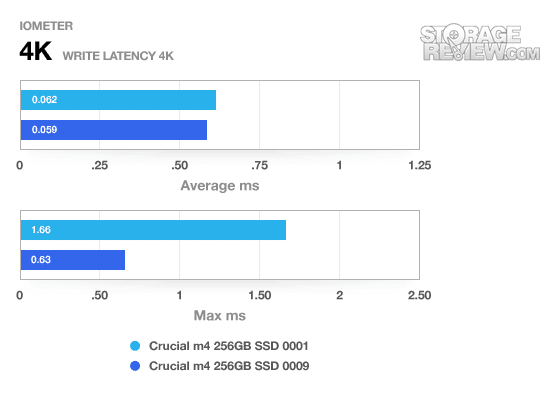
With CrystalDiskMark we saw very similar performance differences as what we found in our IOMeter tests, with read speeds improving substantially on the newer firmware revision.
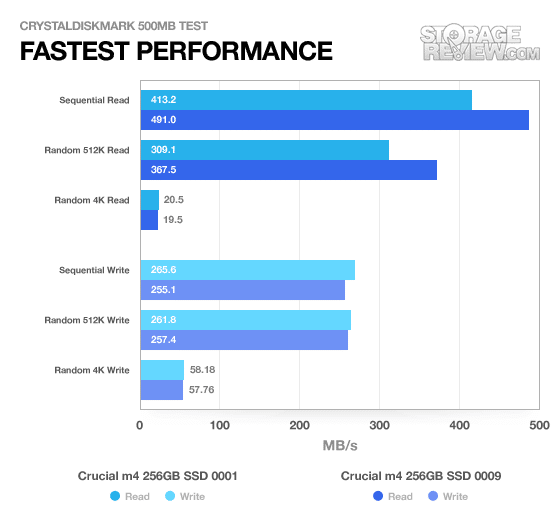
One interesting area that seems to have changed with the latest revision in firmware is mixed read/write performance. In each test except the web server profile which is read-only, performance dropped compared to the launch firmware. It appears that at a queue depth of 8 the 0009 firmware levels off while the launch firmware was still able to climb slightly.
Don’t let this data bother you too much however if you’re a client user (consumer). The server profile tests are generally thought of as enterprise-level tests and in our conversations with Crucial about the new firmware, it sounds like they were willing to give up some of the deeper queue depth performance in exchange for a better experience in the typical client drive setting.
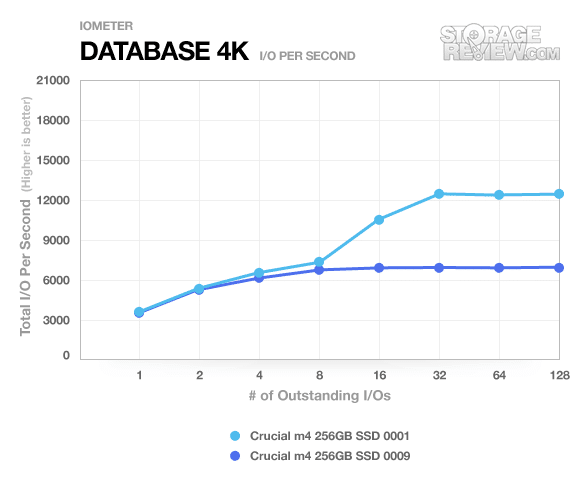
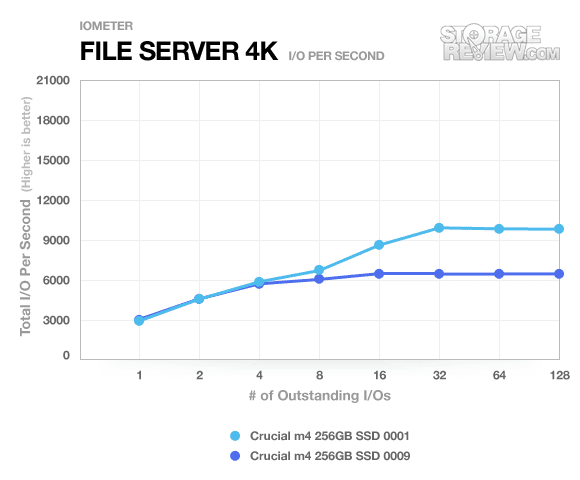
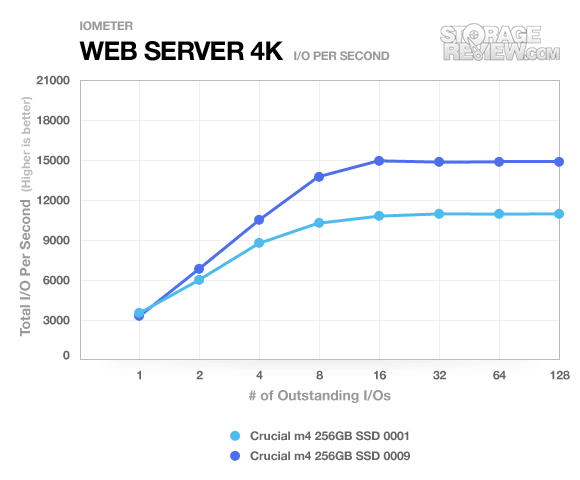
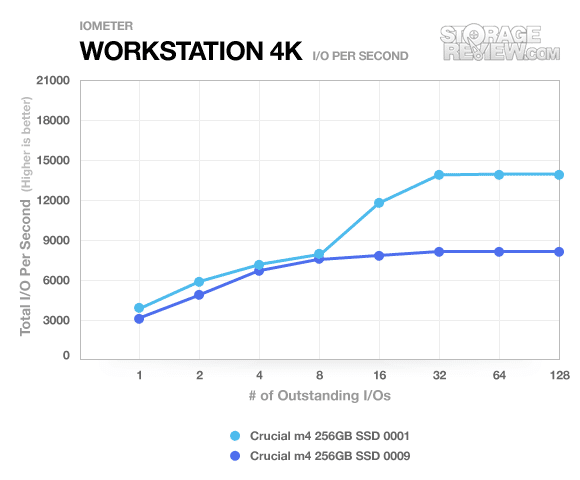
Real World Benchmarks
Just like the changes we saw in our IOMeter server tests with a mixed read/write profile, we saw similar differences crop up in our real-world traces. In our HTPC trace, we saw a gain of 11.19MB/s or about a 6% gain in performance.
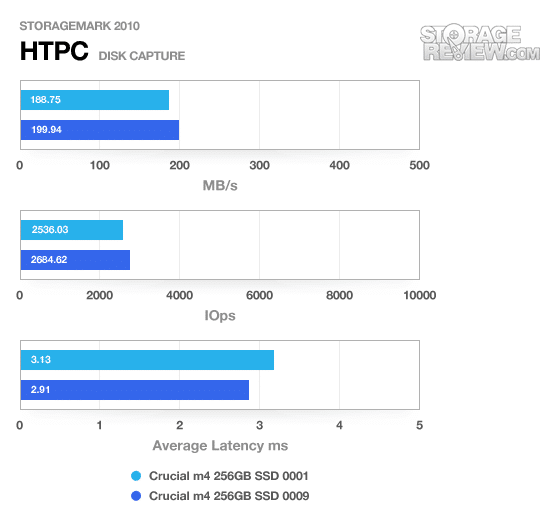
The productivity trace saw a moderate drop in performance, slipping 5.85MB/s or 8.5%.
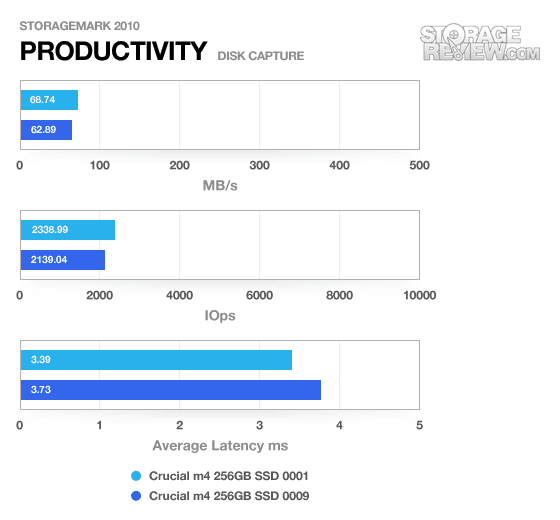
The gaming trace saw the most dramatic increase in performance, jumping over 100MB/s in speed or 32.3%. Given the heavy read access of this trace and the strong boost in sequential read speeds from the newer firmware, it wasn’t a huge surprise to see the largest gains in the gaming trace, although we weren’t expecting such a dramatic change.
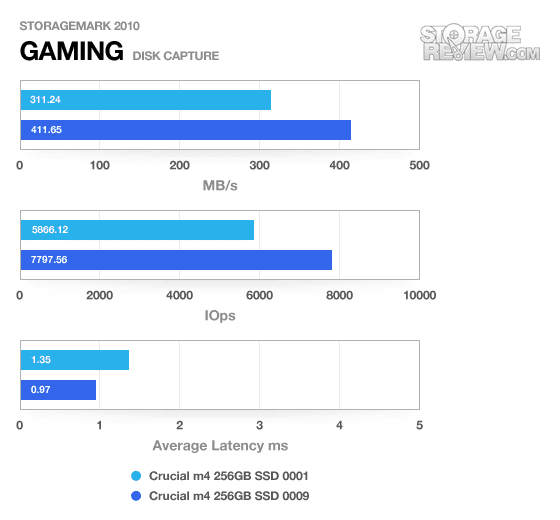
Conclusion
It’s nice to see Crucial fixing bugs and compatibility issues with the latest m4 firmware; but it’s great to see the substantial performance boost across the board when it comes to read speeds. The firmware lived up to its claims of increasing sequential read speeds by 20% and surpassed that big step up in our real-world gaming trace with a boost in performance of 32%.
There were some areas where performance dropped, such as the server profile tests in areas with a mix of read and write activity. Given the client-focus of this drive, Crucial doesn’t expect most users to notice changes in these types of areas. Instead, with most users putting more stress on read performance on a day to day basis, the gains the firmware focused on will outweigh the areas it might have subtracted from.
Overall we are very pleased with the firmware changes to the Crucial m4 and highly recommend applying the update. In fact, the performance increase coupled with likely best-in-class compatibility and aggressive pricing lead us to issue a post-release Editor’s Choice to the Crucial m4.




 Amazon
Amazon